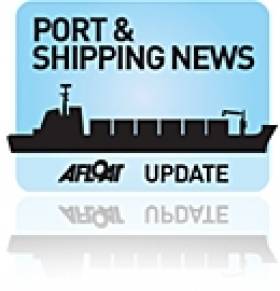Displaying items by tag: EU Parliement
European Ports Welcome EP Adoption of Maritime ETS that Addresses Issue of Carbon & Business Leakage
The European Parliament on the 22 June adopted its position on the EU Emission Trading System (EU ETS), which includes an expansion of the ETS to include shipping emissions.
The European Sea Ports Organisation (ESPO) welcomes the EP position that outlines an ambitious and robust ETS that includes measures to address, and if possible, avoid carbon and business leakage. ESPO also welcomes that the EP position includes earmarking of revenues for investments in ports and maritime.
In order for a regional ETS in the EU to be effective and aligned with the polluter pays principle, carbon leakage through rerouting of ships outside of the ETS scope must be avoided at all costs. If this is not addressed in the final legislation, the ETS would fail to effectively reduce emissions from ships whilst also producing a negative impact on the European port business.
European ports therefore strongly support the measures adopted by European Parliament making it less attractive for ships to change their routes, divert calls, or engage in other evasive behaviours in order to avoid paying into the EU ETS.
ESPO believes that the EP position provides a good basis to address carbon and business leakage in the ETS. The preventative measures included in the EP position should be included in the final ETS to be agreed between European Parliament and EU Member States.
In addition ESPO therefore calls on EU Member States in the Council to closely consider the EP position and to address carbon and business leakage in their general approach to be agreed on 28 June.
"The EP position on EU ETS contains many of the key elements for an ambitious and effective maritime emission trading system. We very much welcome the willingness of the Parliament to address the risk of carbon and business leakage, which would undermine the climate goals whilst damaging the competitiveness of the EU port sector. We hope that EU Member States take these measures onboard in their general approach as part of finding a solution to this issue. Some further fine-tuning might be needed but all the necessary elements for a solution is now on the table.”, says Isabelle Ryckbost, ESPO Secretary General.
More work is needed to ensure that the maritime EU ETS delivers the greening of shipping, whilst safeguarding the competitiveness of the European maritime sector and ports.
European ports look forward to helping policymakers find solutions to the issue of carbon and business leakage to deliver an effective maritime ETS.
EU Parliament Rejects Controversial Ship-Recycling Levy
#ShipRecycling – The European Parliament has today rejected proposals to introduce a levy on all ships calling at EU ports that would finance a fund to support sustainable recycling of ships.
The proposal had been introduced earlier by Parliament's Committee on Environment, Public Health and Food Safety (ENVI).
Instead, MEPs approved an amendment which calls upon the European Commission to submit by 2015 a legislative proposal for an incentive-based system that would facilitate safe and sound ship recycling.
"We welcome the outcome of the vote", said European Sea Ports Organisation (ESPO) Secretary General Patrick Verhoeven, "We understand the need to create an incentive for shipowners to opt for sustainable recycling, but the side-effects of the levy on the competitiveness of EU ports would have been very negative in terms of traffic evasion, changed ship calling patterns and modal back shift, not to mention the bureaucracy involved with it.
By referring the task to create an incentive-based system to the Commission, there will be time to work out an adequate framework which would match the aim of creating sustainable conditions for ship recycling with respect for international rules and the competitiveness of European ports."
The vote by the EU Parliament is not a final one, it gave a mandate to open negotiations with Council in order to come to an agreement in first reading.

























































